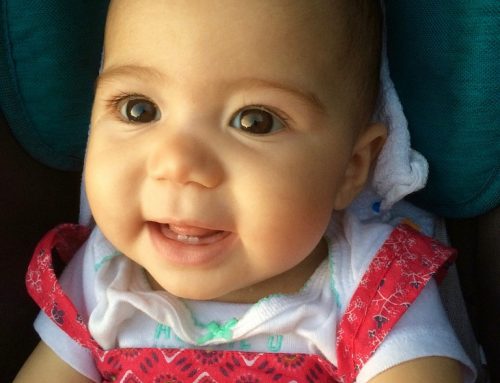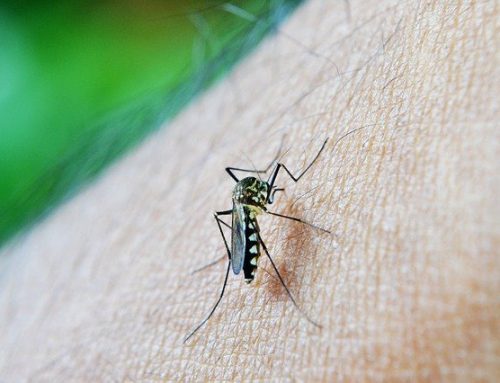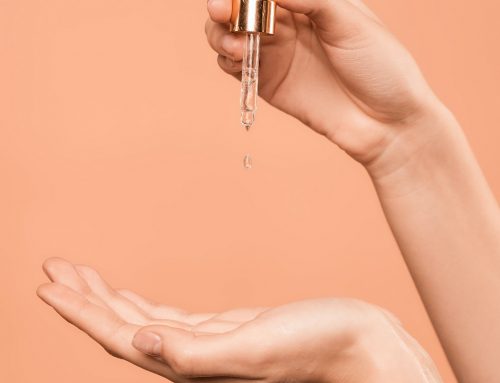Are you worried that your infant has patchy/greasy scales on the scalp? Is its unusual yellowish/blackish colour bothering you? Worry not, your newborn may be having cradle cap – a common & usually harmless condition in infants. Also, it usually self-corrects & doesn’t require medical intervention.
Learn more about cradle cap & simple home remedies to help clear it sooner.
What is Cradle cap

source: https://goo.gl/goqFSX
Cradle cap is a rash/inflammation on the scalp of infants. It looks yellowish, patchy, greasy and scaly. It’s also called crib cap & infantile seborrhoeic dermatitis. It may be crusty, but it neither itches nor causes the baby discomfort. Usually harmless, it goes away on its own. Also, it is not contagious and doesn’t usually require medical intervention [1].
Cradle cap is usually observed on the scalp. But, it may also appear on the face, ears, around the neck, armpits & behind knees. Sometimes it’s even in the nappy area.
It isn’t a disease. It develops in the first 3 months & vanishes typically on its own between 6 & 12 months of age. Though in some babies, it might last longer [2].
Causes of Cradle cap
Cradle cap is neither an allergic reaction nor caused due to poor hygiene [3]. Though doctors debate its exact cause; the following are most probable causes for it:
- Increased levels of an oily substance called sebum in impacted areas
- Reaction to a yeast called Malassezia on the skin [4]
There is a common belief that biotin deficiency can cause cradle cap. Biotin is synthesised by gut bacteria. So, if gut flora is compromised due to antibiotics, a weakened immune system, etc. then it can result in cradle cap [5]. Another contributing factor is believed to be the maternal hormones that may still be present in a baby’s body (passed on at the end of pregnancy). These hormones stimulate excess production of oil (sebum) in baby’s oil glands & hair follicles.
Treating cradle cap at home
If you suspect cradle cap in your baby, confirm with your paediatrician. There’s no prevention for cradle cap, and medical intervention rarely required. But there are a few gentle and straightforward home remedies to clear it sooner:
- Oiling the scalp
- Exfoliation
- Regular hair wash
Oiling the scalp
Gently massage baby’s scalp with coconut oil (or any oil that suits your baby) to loosens flakes. Let oil sit for at least 15 minutes. Also, wash off oil with a gentle baby shampoo.
Note: Essential oils have anti-microbial/anti-fungal properties. Many people believe that such Essential oils can help to fight yeast infections. If a yeast infection causes cradle cap, some parents may opt for essential oils. However, essential oils are potent and can affect a baby’s sensitive skin. Please seek your paediatrician’s advice before trying out Essential oils on baby’s scalp.
Regular hair wash
Washing baby’s scalp regularly with gentle baby shampoo can reduce the appearance of cradle cap. Note: Confirm shampooing frequency with your paediatrician since over-shampooing could dry baby’s scalp & aggravate the condition.
Exfoliation

source: https://goo.gl/Ma5XUZ
Gently brush baby’s scalp with a baby comb to loosen & remove flakes off strands. You can comb immediately after the bath or at any other time. Also, don’t pick/scrape the scales as it causes infection. If scalp reddens, reduce brushing.
Other treatments
- If the symptoms turn severe, the doctor may prescribe special cream/shampoo [7]
- Incorporating probiotics in diet*
Note: *Some people believe that enhancing gut flora can help to clear cradle cap caused due to biotin deficiency/yeast infection. Consult your doctor to find if mother’s diet (if the baby is EBF) or in baby’s diet (if the baby is on solids) should include probiotics.
Anu’s cradle cap
I remember Anu had scaly scalp since she was 3-4 weeks old. I showed it to her paediatrician who confirmed its cradle cap. He did not prescribe any line of treatment.
Anu’s massage Maushi would gently massage her scalp daily with coconut oil (starting 5th or 6th week). She would let the oil remain on scalp for 15-30 minutes and then wash it off while bathing baby with baby shampoo. Post Anu’s bath, Geeta Maushi would gently comb Anu’s scalp for 30-60 seconds. She warned me never to pull out or force out the scalps. Anu’s cradle cap cleared entirely by the time she was 6 months old (if I remember correctly).
When should you see a doctor for cradle cap
A doctor consultation might be necessary if you observe the following:
- Home remedies don’t work even after baby crosses 12 months
- Rash worsens, covers large parts of the body
- Rash itchy; causes hair loss
- Skin turns firm, warm & red, oozes liquid (possibly infected)
Conclusion
Cradle cap is a commonly occurring scaly, rash on the scalp of a newborn. It usually does not cause any discomfort and usually self-resolves without medical intervention. Home remedies such as gentle oil massage and regular hair wash are effective to clear it. If symptoms persist over a year’s time or aggravate, consult a doctor.






Leave A Comment